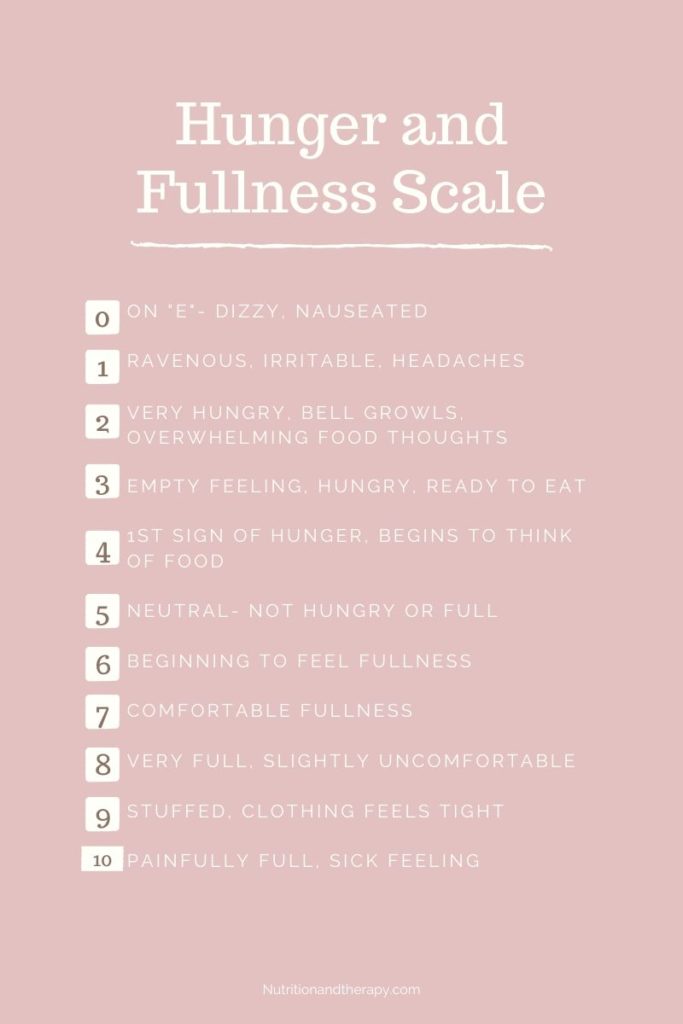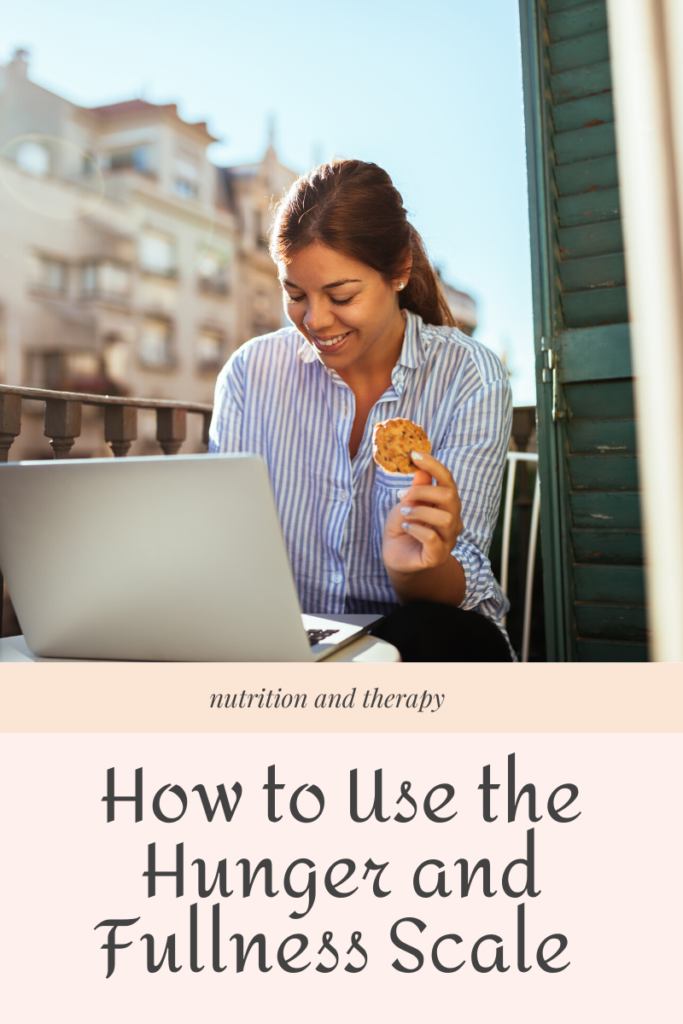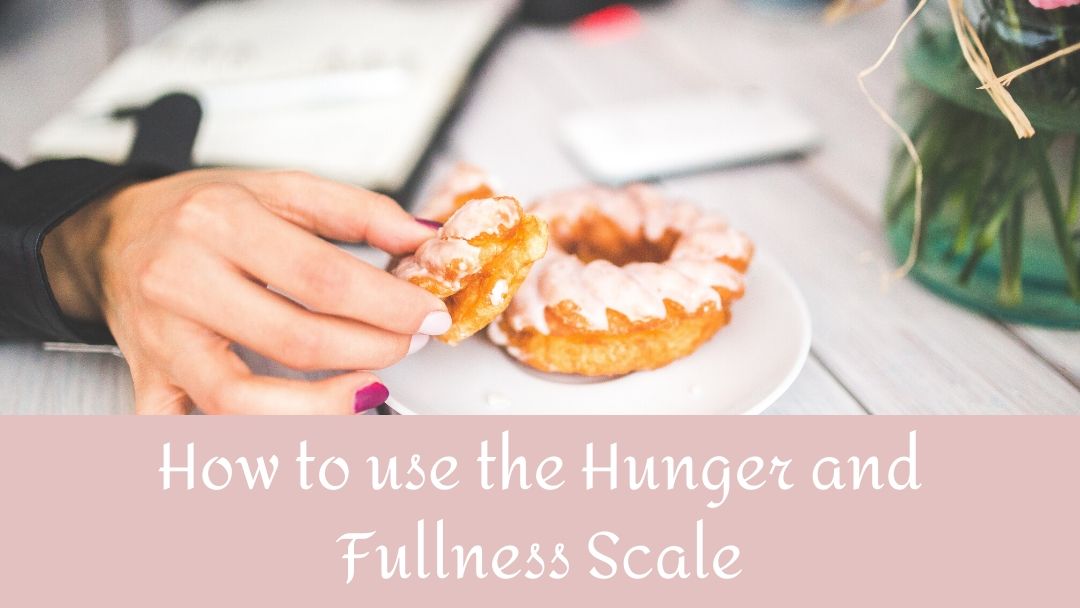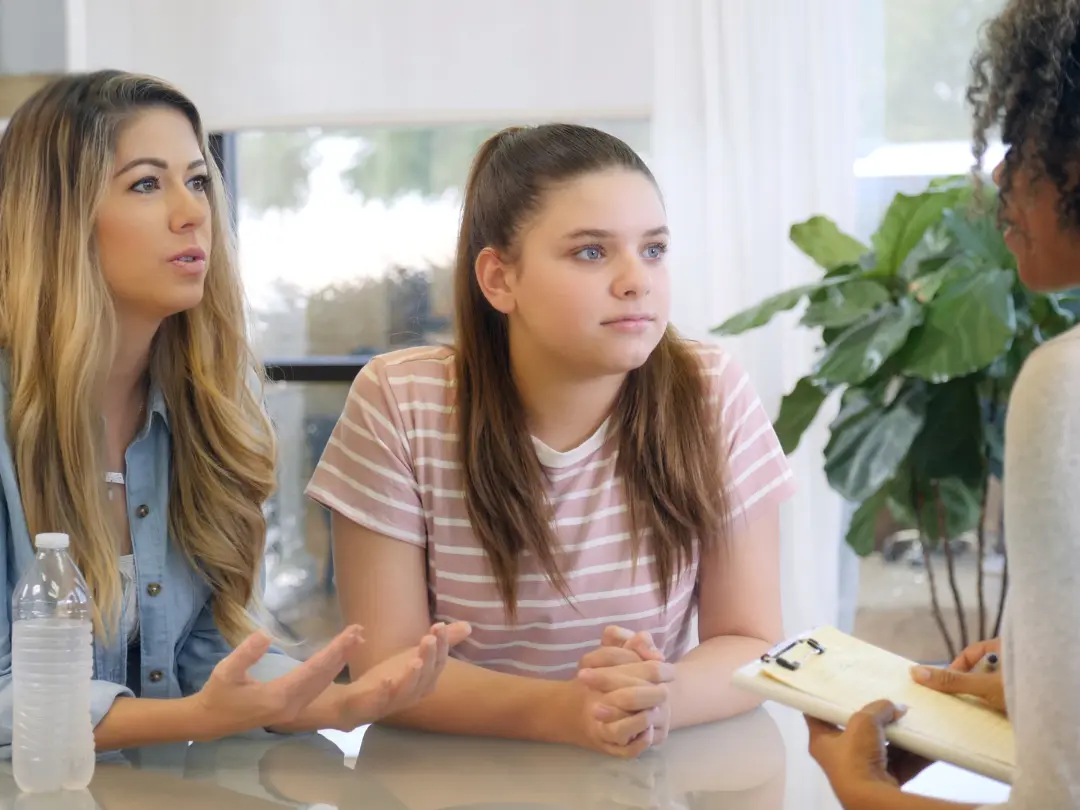If you have heard of intuitive eating, you may have heard of or even tried to implement the hunger and fullness scale. This guide will tell you everything you need to know about the hunger and fullness scale and how you can use your own hunger and fullness to guide how much you eat instead of following diets or rules.
What is the Hunger and Fullness Scale
The hunger and fullness scale is a linear scale from 0 (ravenously hungry) to 10 (so full you are feeling ill). This scale was developed to help people who are learning how to eat intuitively gauge their hunger and check in with themselves as they eat.
You will likely see several variations of this scale around the internet, but they are all very similar in the idea that you will feel your best if you avoid going too high or too low on the scale.
As you become comfortable with the scale, the numbers mean less and you begin to recognize the feelings associated with each level of hunger and fullness. You are the one who get’s to decide when you eat and when you stop eating, and this scale can be a helpful aid as you learn your own body signals.

How to Use the Hunger and Fullness Scale
It is important to note that the hunger and fullness scale is a guide. It is not a rule or a end all be all when it comes to eating. Using the scale can be difficult at first, especially if you are not able to identify your hunger or fullness until they got to the extremes.
Not feeling hungry until you are really hungry is common when there has been a lot of hunger suppressing in the past (from dieting, chaotic eating, numbing hunger, or other means of ignoring hunger signals).
As a beginner with the hunger and fullness scale, the best approach is to use it as a non-judgmental observation tool. Every time you eat, try to identify where you might be on the scale. When you are done eating, try to identify what your level of fullness is. This helps you get used to listening for specific body signals.
Journaling during this process can also be helpful as a way to see trends and patterns in your body signals and the level you often begin to eat or end your meal at.
As you become comfortable with using the scale, you may find that you feel your best when you begin eating at a certain number and end your eating experience at another number.
For example: When you begin your meal at a 3, it is easy to end you meal around a 7, which feels comfortable for you. If you wait until you are at a 1-2, then it becomes more difficult to stop eating when you are full, and you often feel uncomfortable at a 9. These are only examples, as every person feels differently and can find an eating pattern that works best for them.
Should I Eat if I am Not Physically Hungry?
You know you shouldn’t wait until you are ravenously hungry to eat, but what happens when you don’t feel hunger until that point?
When you begin this process, your hunger signals may be hidden (even feeling non-existent). It’s important to implement a flexible eating pattern that works for you. Eating regularly helps your body to release hunger and fullness signals more easily, increases your awareness, and provides regular and consistent fuel for your body.
A flexible eating pattern could be as simple as making sure you are eating something (anything) at least every 5 hours if you usually go long periods between meals.
If this is something that you are struggling with, setting up a consultation with a dietitian to help you navigate what a flexible eating pattern might look like for you can be incredibly helpful.
Why can’t I stop eating even though I’m full
If overeating is something that you are continually struggling with, the hunger and fullness scale can be a very helpful tool to identify patterns and help you to overcome these obstacles.
There are several reasons we may over eat. We allow ourselves to get too hungry, we are not mindful as we eat, or we are still stuck in the diet mentality and fear that we need to eat the food while we can.
See the strategies below for some tips to help you work through some of these struggles.
Strategies for Using the Hunger and Fullness Scale
To help you become more in tune with your body and end your meals feeling comfortably full, you can begin to implement some of these strategies below.
Mindful Mid-Meal Pause
If mindful eating is a foreign concept to you, or seems like too difficult of a task, then this easy beginners strategy might help. Any time you eat, make a conscious decision to take a break from your meal when half of the food is gone.
During this mid-meal pause, you do not have to be done with your meal, but give yourself a few minutes to check in and identify where you are at on the fullness scale.
If you are almost full, how many more bites will it take to be comfortably full? If you are still hungry, will you need to eat everything on your plate to reach fullness? Maybe you will need something extra. Are you getting full, but not satisfied? Maybe you can stop eating what you are currently having and switch to something else that will satisfy you.
This break helps you check in with yourself even in the busiest of meals and environments. You can do this while eating with friends, working on the computer, or any other time that it just doesn’t seem feasible to eat your entire meal in a mindful and focused way.
Snacks and Practical Eating
Sometimes we need to eat according to someone else’s schedule, not our body’s. This is just a part of life, but it doesn’t mean that intuitive eating or honoring our hunger and fullness can’t be done.
When you need to eat according to a schedule, planning snacks or eating a meal when you are at a level of almost hungry, or even neutral can be beneficial.
We know that our bodies run by their own clocks, not our work meetings or our kids soccer games. Planning for hunger is a way that you can effectively avoid getting to the ravenously hungry stage and keep your body well fueled and expecting of food.

Use the hunger and fullness scale provided to get started learning your own hunger and fullness signals. When you need extra support and guidance, contact me today to see if virtual intuitive eating counseling can help you reach your goals.








